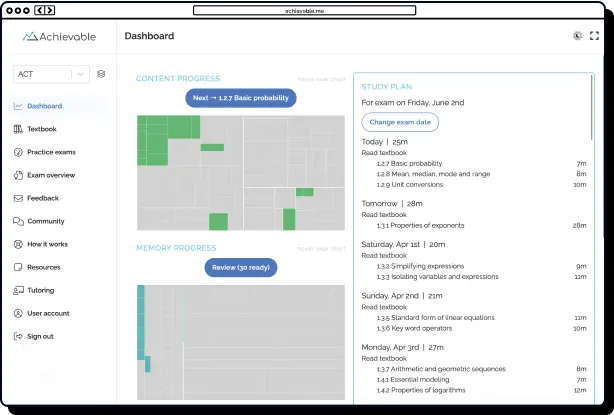
Therapeutic exercise techniques explained




Table of contents
- What is therapeutic exercise?
- Definition
- The healing power of movement
- Goals of therapeutic exercise
- Types of therapeutic exercises (with clinical examples)
- 1. Range of motion (ROM) exercises
- 2. Strengthening exercises
- 3. Flexibility and stretching exercises
- 4. Balance and coordination training
- 5. Aerobic/Endurance Training
- 6. Functional and neuromuscular re-education
- Therapeutic exercise in practice: the human side
- Therapeutic exercise on the NPTE: What to expect
- Final thoughts: Movement is medicine
Imagine not being able to lift your arm to brush your hair or take a few steps without fear of falling. For many patients, these everyday activities can feel like climbing a mountain. However, with dedicated therapeutic exercise, support, and the right physical therapist, individuals can gradually rebuild their strength and regain independence.
Therapeutic exercise is a vital part of a physical therapist's job description. The focus isn’t on building six-packs; it’s about restoring lives through carefully designed movement programs that are gentle, progressive, and purposeful.
If you’re studying for the National Physical Therapy Examination (NPTE), understanding therapeutic exercise is absolutely necessary. Mastering this topic is not only key to acing the NPTE exam but also forms the foundation of your future role as a compassionate and skilled physical therapist.

What is therapeutic exercise?
Definition
Therapeutic exercise is a systematic, deliberate regimen of physical movements designed to address or prevent physical impairments and enhance overall well-being. Each therapeutic exercise plan is individualized through careful assessment and tailored interventions, with the specific goal of improving:
- Mobility
- Strength
- Endurance
- Balance
- Coordination
- Functional capability
By incorporating targeted therapeutic exercise into patient care, healthcare professionals empower individuals to restore movement, recover function, and support long-term physical health.
The healing power of movement
In the world of physical therapy jobs, movement is more than just an action: it’s a vital tool, and sometimes the only medicine a patient needs. Physical therapy jobs often include designing tailored exercise programs that can:
- Support an injured athlete’s recovery and help them return to sport, a skill shared with many athletic trainer roles
- Improve posture and alleviate chronic back pain, key outcomes in many physical therapy jobs
- Retrain walking patterns in stroke survivors, highlighting the specialized care provided by a physical therapist and physical therapist assistants
- Reduce fall risk in older adults, a crucial aspect of geriatric physical therapy
- Enhance breathing and circulation for individuals with limited mobility
Understanding the diverse responsibilities of physical therapists makes it clear how essential therapeutic movement is to successful patient outcomes.
Goals of therapeutic exercise
Every exercise plan is personalized, but the overall goals often include:
- Restoring joint range of motion (ROM)
- Improving muscle strength and endurance
- Increasing flexibility and soft tissue length
- Re-establishing balance and coordination
- Enhancing functional independence
- Reducing pain and inflammation
- Preventing future injury or dysfunction

Types of therapeutic exercises (with clinical examples)
Let’s break down the six primary NPTE categories. You’ll find clear examples to help connect each NPTE category to real-life clinical practice, as well as typical NPTE exam scenarios.
1. Range of motion (ROM) exercises
Purpose: Maintain or improve joint mobility, especially after injury or surgery.
When to use: Post-surgery, neurological conditions, immobilization.
- Passive ROM (PROM): The therapist moves the joint for the patient.
- Active ROM (AROM): The patient moves the joint independently.
- Active-Assisted ROM (AAROM): A mix of therapist or tool assists.
Examples:
- Shoulder pendulum swings post rotator cuff surgery
- Ankle circles for bedridden patients
- Wrist flexion-extension after cast removal
2. Strengthening exercises
Purpose: Improve muscle force generation and protect joints.
When to use: Post-immobilization, muscle atrophy, weakness, chronic pain.
- Isometric: Tension without movement (e.g., quad sets)
- Isotonic: Movement through ROM (e.g., resistance bands, weights)
- Isokinetic: Machine-controlled movement (e.g., Biodex machine)
Examples:
- Wall sits to improve quad strength
- Heel raises for ankle stability
- Glute bridges for lumbar support
3. Flexibility and stretching exercises
Purpose: Improve soft tissue extensibility, reduce stiffness, and correct muscle imbalances.
When to use: Chronic tightness, postural issues, recovery from immobilization.
- Static stretching: Hold a stretch for 15 - 60 seconds
- Dynamic stretching: Controlled movement through range
- PNF (Proprioceptive neuromuscular facilitation): Advanced technique for improving flexibility
Examples:
- Hamstring stretch for limited hip mobility
- Chest wall stretch for rounded shoulder posture
- Calf stretches for plantar fasciitis
4. Balance and coordination training
Purpose: Improve proprioception, stability, and prevent falls
When to use: Neurological disorders, vestibular dysfunction, elderly rehab
Examples:
- Single-leg stance with visual feedback
- Tandem walking (heel-to-toe)
- BOSU ball exercises for ankle sprain recovery
- Reaching tasks on a foam pad
5. Aerobic/Endurance Training
Purpose: Improve cardiovascular and pulmonary function, energy efficiency
When to use: Cardiac rehab, pulmonary rehab, deconditioning, diabetes, obesity
Examples:
- Walking on a treadmill or track
- Stationary cycling with heart rate monitoring
- Aquatic exercise for joint protection
- Arm ergometer for upper extremity endurance
6. Functional and neuromuscular re-education
Purpose: Retrain patterns for daily living, especially after injury or neurological events
When to use: Stroke, spinal cord injury, orthopedic post-op, Parkinson’s disease
Examples:
- Sit-to-stand practice
- Task-specific gait training (curbs, stairs)
- Step-ups with handrails
- Mirror therapy for limb awareness
Therapeutic exercise in practice: the human side
Behind every protocol stands a healthcare professional dedicated to patient recovery, motivation, and progress.
- A grandmother relies on the expertise of her therapist to dance again at her granddaughter’s wedding.
- A young man partners with his physical therapist to return confidently to sports after a spinal injury.
- A teacher seeks guidance just to carry groceries without pain.
With specialized knowledge in therapeutic exercise, physical therapy professionals are empowered to transform these goals into achievements.

Therapeutic exercise on the NPTE: What to expect
You’ll likely be tested on:
- Appropriate exercise choices for specific conditions
- Contraindications and red flags (e.g., post-op protocols)
- Exercise progression
- Patient education strategies
- Matching goals to intervention types
Final thoughts: Movement is medicine
Therapeutic exercise is more than just another topic on the NPTE: it’s a cornerstone of every physical therapy professional’s duties in everyday practice. As a future medical professional, your role in physical therapy jobs goes beyond demonstrating movements. Patients are empowered to rebuild strength and confidence, one rep, one step, and one goal at a time.
Keep studying therapeutic exercise principles. Keep connecting with patients and colleagues in physical therapy. Remember: every small movement, guided by your expertise, is a vital step toward healing and recovery.

